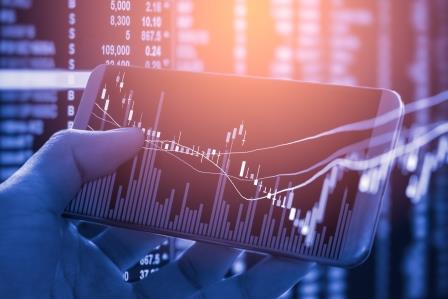Globally, markets are delicately poised in an uncertain environment. Valuations are high, much higher than historical averages. High valuations can be justified in this ‘new normal’ of humongous global liquidity and historically low interest rates. But the problem with high valuations is that markets would be vulnerable to corrections. Corrections may be caused by known threats or presently unknown factors. The major known threat to markets, now, is the steadily rising bond yields in the mother market US. The US 10-year is hovering around 1.6 percent in mid March. If the bond yield continues to rise and go beyond 2 percent in a few months, there is a threat of major correction in the market. On the other hand, if the ongoing growth recovery gathers steam and bond yields stabilize or rise only marginally, markets are likely to remain buoyant.
The February crash and the recovery
It is important to appreciate the fact that the current bull run is global. The primary drivers of the rally are the abundant liquidity available in the global financial system, the historically low interest rates and the new trend of hyper investment activity by retail investors – the so-called ‘Robin Hood phenomenon’. A runaway market without adequate valuation support needs only a trigger for correction and recently that came from the bond market. It is important to understand that the US 10-year bond yield is the single most important financial indicator that can move all markets – bond, equity and currency. And, when inflation fears emerged, the bond bears pressed sales pushing the yields up. On 25th Feb the US 10-year yield spiked to 1.61 percent leading to a sell-off in US equity markets. In EMs FIIs sold heavily spreading panic and bears charged-in to exploit the opportunity. Nifty crashed 568 points on 26th Feb.
But the power of liquidity is so strong that when the yields cooled off a bit the markets bounced back.
Is this rally similar to 2003-07 bull market?
A much-debated issue now is whether the current bullrun is a repeat of the 2003-07 bull run, which took the Sensex from 3000 in May 2003 to above 20000 by December 2007. There are some similarities and some stark differences too. The 2003-07 bull market too was characterized by huge FII inflows. FII inflows continued in spite of steady rise in US bond yield from 3.4 percent in May 2003 to 4.3 percent by end 2007.
But the stark differences cannot be ignored. When the 2003-07 bullrun started, valuations were very low with Nifty PE around 12. So, there was room for PE expansion to take the market higher. More importantly, 2003-07 witnessed a record GDP growth of around 8.4 percent annually and corporate earnings grew by an impressive 30 percent CAGR. This impressive earnings growth provided the fundamental support to the market. This is in sharp contrast to the present situation where the trailing Nifty PE is excessive at around 40 and FY 22 Nifty forward PE is very high at around 22.
For this rally to sustain GDP and earnings growth should sustain for a few years. There is no clarity on this. FY 22 growth – GDP growth at 12 percent and earnings growth at above 30 percent – will be impressive, thanks mainly to the base effect. But beyond that? A capex expansion cycle can sustain the growth rate. The bold 2021 budget focusing on privatization can turn out to be a trigger. The jury is still out on this.
The inflation threat
The major known threat to this bull market is inflation. Bond bears believe that the combination of ultra-loose monetary policy and the $1.9 trillion US fiscal stimulus will trigger inflation and a sustained rise in bond yields, leading to a market crash. The market has a clear logic: Bond yields and stock prices are negatively correlated. That’s why Warren Buffet famously said that “interest rates act like gravity on stock prices.” So when interest rates reverse direction, equities have to decline, because higher interest rates can support only lower PEs.
Rising bond yields indicate growth recovery?
But there is another interpretation of the rising yields. The Fed chief Jerome Powel was quick to explain that rising yield is an indication of growth recovery. The bond market is discounting the imminent rebound in growth. The Fed chief went on to emphasize that the Fed rate will be kept near zero through 2023 and that the Fed will tolerate higher inflation, if need be.
Remain invested in quality stocks
In brief, if inflation continues to remain subdued and growth makes a smart recovery, markets can remain buoyant, globally. In this favorable global construct, if growth and earnings accelerate in India, this rally will sustain. On the other hand, if inflation suddenly spikes pushing the US 10-year bond yield up, say beyond 1.8 percent, there can be a sell-off in equity markets. The correction can be sharp. But ample liquidity will ensure recovery in the medium term. Only time can tell which scenario will play out. Remaining invested in high quality stocks in financials, IT, cement, industrials, autos and pharma and continuing to invest in small-mid-caps through mutual fund SIPs would be a good investment strategy in these uncertain times.










